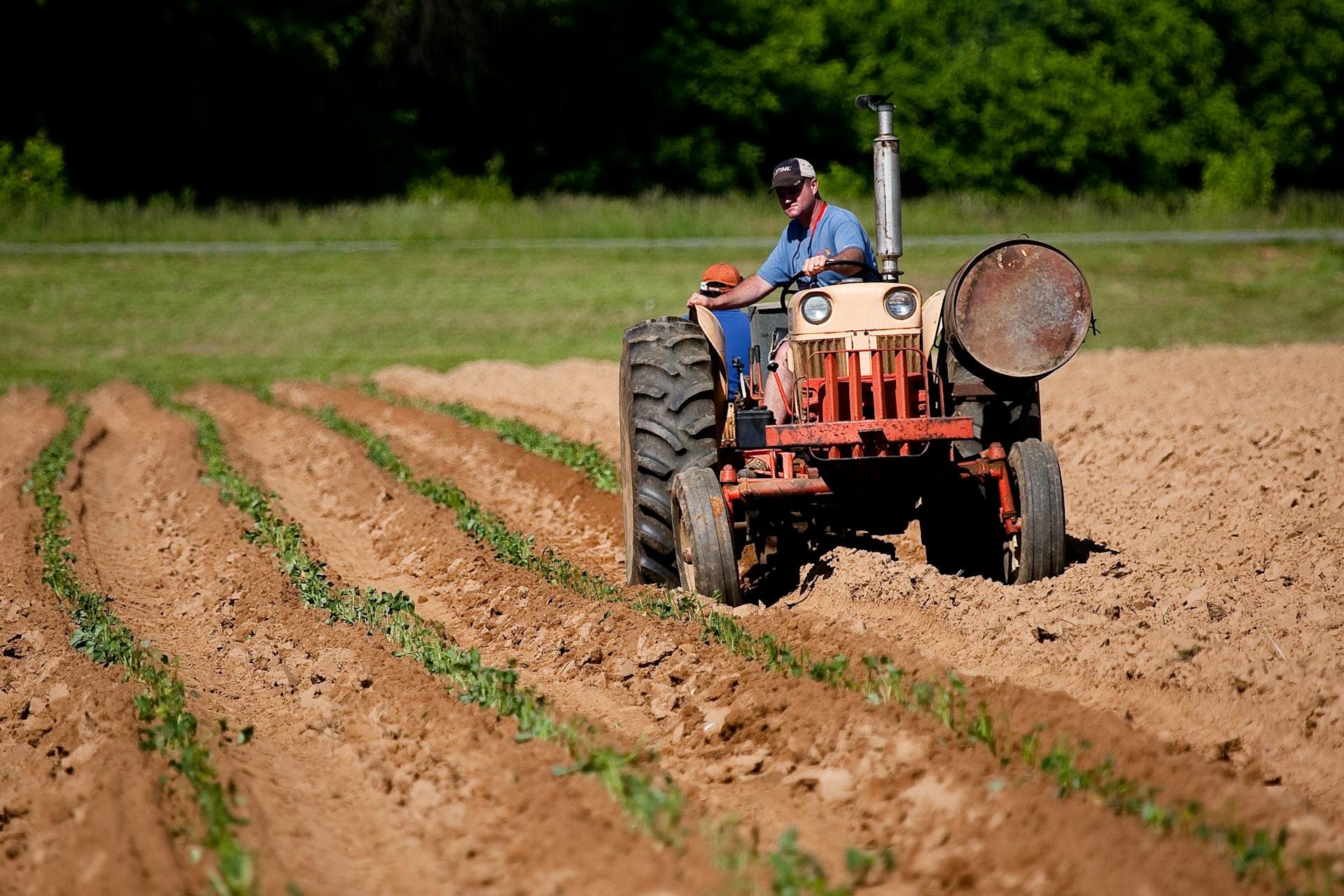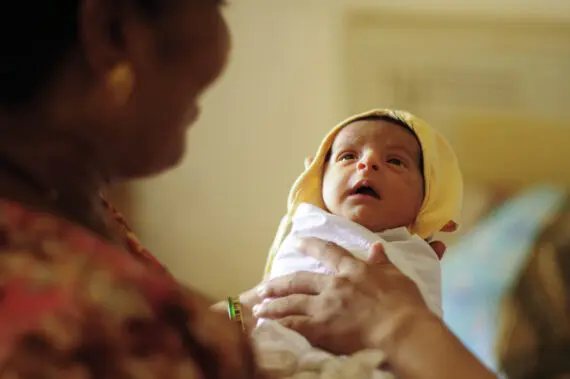Note: This piece was written before the outbreak of the devastating wildfires in Los Angeles. The tragedy underlines the urgency of the climate crisis as well as the need to protect outdoor workers from the impacts of smoke from wildfires.
Feeding the 340 million people in the United States is an enormous undertaking. Bread for the World emphasizes the importance of all parts of a healthy food system—each step “from farm to fork.” The country’s agricultural workers are not only a component of the food system that is critical to ensuring that everyone in the country has access to nutritious food, but also a group of people who are at disproportionate risk of hunger, poverty, and exposure to climate impacts.
There are about 2.4 million agricultural workers in the United States, a number that has not fluctuated significantly since 1990. Construction workers are another large group of people whose work is largely outside, along with roofers, sanitation workers, postal carriers, highway repair teams, and more.
As climate impacts accelerate, the U.S. government must ensure that outdoor workers are protected.
Many outdoor workers are members of racial and/or ethnic minority communities. For example, Latinos are about 20 percent of the U.S. workforce, but roughly half of workers in construction (51 percent) and groundskeeping (47 percent).
Agricultural labor, in particular, is usually low-wage work. Both official sources, such as the Economic Research Service of the U.S. Department of Agriculture, and nonprofit organizations, such as the Economic Policy Institute, report that farmworkers are paid about 40 percent less than people with similar nonfarm jobs.
Outdoor workers also face pressure to work regardless of extreme temperatures or other adverse conditions, because they are usually paid only for the hours they work. Lack of paid leave plus the low pay means that people have little choice but to work to put food on the table.
Many decades of record-keeping on weather and climate conditions have enabled researchers to reach wider conclusions supported by evidence. According to analysis led by scientists at NASA’s Goddard Institute for Space Studies, Earth’s temperature has increased by at least 1.9 degrees F. (1.1 degrees C.) since 1880, with the majority of the increase taking place since 1975.
The Fifth National Climate Assessment, published in 2023, found that since at least 1970, the continental United States has been warming faster than many other parts of the world.
Despite widespread recognition that the planet’s rising temperatures and other climate changes pose an alarming risk to humanity, we still don’t know enough about the impacts of climate change on human health.
For example, when people are asked to identify dangerous climate impacts, a common response is potential severe illness or death from excessive heat. Yet there are few large-scale studies of even this frequently mentioned risk. One of the few studies available was published in 2015 and uses data from 2000-2010. At that time, researchers wrote, “Occupational heat-related mortality is not well studied and risk factors remain largely unknown.”
There is a little more information available about another danger amplified by climate change: wildfires, which occur more frequently than in the past and are often larger and harder to contain.
Of course, wildfire poses a danger to everyone working in an area where the fire could spread. The other main concern is smoke, which contains tiny particles that can penetrate deep into a person’s lungs. This can increase the risk of respiratory diseases, asthma, and heart problems.
Health authorities warn people in affected areas to stay indoors. But farmworkers usually cannot afford to take unpaid time off. Employers may also pressure people to work regardless of working conditions. They may give as their reason that longer wildfire “seasons” overlap with peak harvest seasons more frequently than in the past.
Researchers who studied data from the 2020 Glass and LNU Lightning Complex fires in Sonoma County, California, found that many farmworkers continued to work in the aftermath of the fires, often in zones that had been ordered evacuated. Employers urged people into the fields so as to save as much as possible of the grape harvest before the grapes became contaminated by smoke and ash.
Researcher Michael Méndez, assistant professor at the University of California-Irvine, reported, “Hundreds of farmworkers were exposed to the toxic air quality of wildfire smoke… There wasn’t any post-exposure monitoring of these farmworkers.”
Reports like these underscore the need for the U.S. government to do more to protect the health and safety of essential workers. Fair laws that are enforced are needed on many specifics, from the availability of sufficient drinking water to how equipment must be maintained.
Many outdoor workers already face low pay and poor working conditions simply to put food on the table. Now some are also expected to work in times of excessive heat or dangerous levels of air pollution from smoke. They should be food secure and have adequate workplace safety standards, just as indoor workers should.
Michele Learner is managing editor, Policy and Research Institute, with Bread for the World.
Deepen your understanding of hunger’s causes and solutions – join our Institute Insights community and receive free, research-based articles like this one straight to your inbox.



